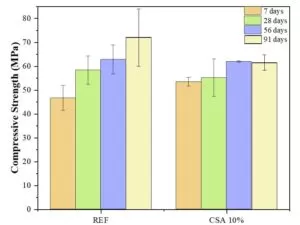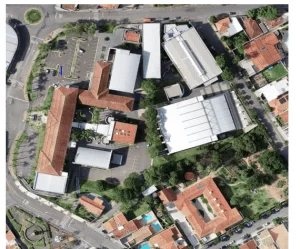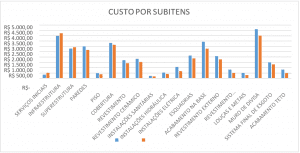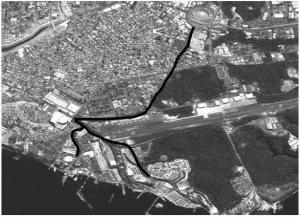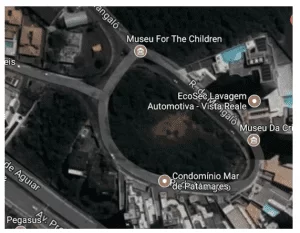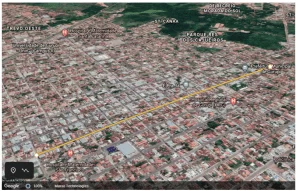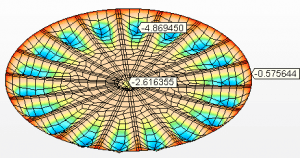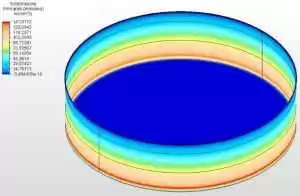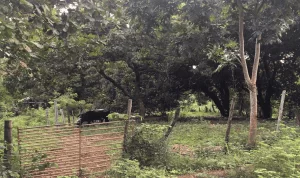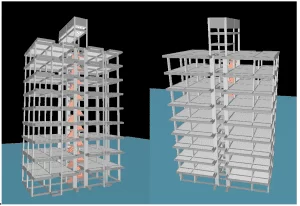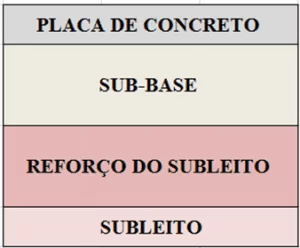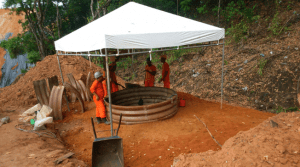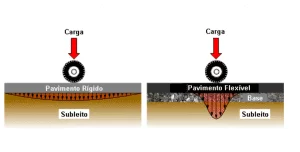LOPES, Sarah Christina Oliveira [1]
LOPES, Sarah Christina Oliveira. Planning and control of Housing Work: case study of residential Garden Ipiranga in redemption/PA. Multidisciplinary Core scientific journal of knowledge. 03 year, Ed. 06, vol. 05, pp. 42-53, June 2018. ISSN:2448-0959
Summary
The planning, control and management of a housing development should be geared exclusively to particular work, thereby avoiding distortions and lack of process interactions which can cause delays. However, for any venture is necessary to proper planning, discrimination and coherent, seeking concatenate all services in a joint development of all sectors, this requires a monitoring and systems developments and planning programs and production controls that may be used during the work, seeking thus to be within the real estate market competition and winning a vision of customers. As a form of analysis, data were verified and study of 10 (ten) projects of social interest housing, in which only 1 (one) project – Residential Garden Ipiranga excelled others in relation to your production and completion by the deadline in timeline initially hired, but without monitor jointly the quality of development, affecting thus the reliability of the beneficiaries.
Keywords: planning, control, PCP, Housing Production, quality, management.
1. Introduction
Administer a work in which have quality and rapidity in its processes is not a very easy task. It is not today that arise delays in deliveries of construction due to lack of planning and control in all processes. There are now several programs of planning and controls, however, attention is required to apply them during production, because when problems begin to emerge, coincidentally, planning ceases to be used.
Every enterprise needs a proper attention in relation to your planning, production, and logistics processes. According to Simão (2010), within the production function, there is the process of planning and control of production-CFP, in which deserves a due prominence. The PCP takes care of the planning and control of all aspects of the production of goods and services, including the materials planning, inventory management, scheduling of machines and people, the control of performance indicators, such as costs, quality and on-time delivery.
The numerous competitions in construction, made with companies to dedicate more investments of these systems of planning and cost reduction, because consequently it, customers also observe more flexibility construction companies, without necessarily running quality of enterprise.
However, to achieve a success in the production process and in your final quality, all services and systems of an enterprise must be related to each other, seeking a minimum interaction required to streamline the procedures for implementation of the projects in all sectors, be it purchases, production, financial and human resources.
From then on it was a study conducted between late 10 (ten) Housing Developments, where the article will be deepened in the Ipiranga Garden Residential, which was the only undertaking among the 10 (ten) analyzed that completed the work in term proposed in Schedule initially hired.
The case study is intended to reach a decision, using the means of discussion, analysis of the information and data collected with proper authorization by the construction company AMEC and executive management Housing-GIHAB/MB, which could yield several data in digital form, printed, in addition to regulatory and confidential documents, as well as the records of requests received by builders and beneficiaries, which were analyzed for the study.
2. Production planning and control
According to Simão (2010), for a company to be profitable, this need to organize several processes, machines, equipment, people and materials, within the time limit laid down and so economical as possible, i.e. with low cost, however, without affecting your quality. This is a complex task and requires a good production planning and control (PCP), along with the Administration responsible for the planning, management, control and materials supply process activities of a construction company.
According to Arnold (apud 2008 SIMON, 2010), there are issues of priority and ability in the CFP. The priority concerns which products, how many and when they are needed to produce and buy. The capacity is already with the skills necessary to produce such products and services. In the short term, is the amount of work that resources (man and machine) can play during a certain period.
However, the high competitiveness among firms in the labour market of civil construction, innovations in the development of technologies, materials, processes, products, systems and management techniques require increasingly initiatives of companies to implement the competition between them. Thus, the parameters of Competitiveness demanded by the market of current production systems and performance measures can be summarized in five categories: cost, quality, speed, flexibility and confiabilidade, which are characterized of follows, according to Lustosa et al. (2008):
Quality: seeks to produce goods and services that meet strictly your specifications and whose production processes to avoid waste of material and rework. The search for quality also has important impacts on the image of the company applicant.
Flexibility: Ability of the production systems to respond effectively to changes arising from fluctuations and uncertainty in the productive environment. Is the ability to adapt the company to the market uncertainty, economic crises and technological advancement. Makes it possible to delivery and continuity of operation, even in the event of unexpected outages.
Reliability: search for honouring the commitments of delivery within the deadline with the client.
Speed: during processing, reduces the total production time. The speed in the production process results in the decrease of costs related to the work in process, however, should be accompanied along the categories of quality and reliability.
Cost: Influences directly on the competitive capacity of the company, therefore, deserves special attention. Is influenced by the criteria of performance, because an improvement in any one of them, generally reflect in cost reduction.
The role of production planning and control is a central element to the value chain management, because searching internal integration among the various functions of the company, including its parameters of Competitiveness. The PCP is the function responsible for managing power of fluxo of materials, the use of people and equipment, using thus your available capacity of the company.
In this way, the PCP needs to draw up plans to balance the demands, according to capacity and resources that the company owns. This is done through planning stages, arranged in a hierarchy of processes of production planning, which can be in conjunction with the parameters of Competitiveness.
2.1 Housing Projects of social interest
The projects reviewed for this study, are the program my house my life (PMCMV) of the Federal Government in partnership with Caixa Economica Federal (CEF), which seeks to facilitate the achievement of home ownership to low-income people. The program was adopted in 2008 and to the State of Pará through the residential lease (FAR) until early 2017, 134 Projects were contracted, totaling 81,772 housing units according to National Oversight My home my Life (SUMCV).
Already the Caixa Econômica Federal has the GIHAB/MB-Executive Management Housing Marabá/PA where it operates throughout South and Southeast of Pará and has as its objectives-analyse, hire, deliver and monitor the pós-obra housing ventures social interest, such as my house my life (MCMV) and National Rural Housing Program (PNHR) of the Federal Government.
Each program has its characteristics and requirements for hiring, is where they enter the engineers and Architects of the GIHAB unit to analyze and report of technical the underlying condition of the enterprise and whether these are really viable construction.
The routine of care by the staff of GIHAB consists of the follow-up of the proposal and of the operation, since the initial assistance to the applicant (construction company) until the completion of the project, passing through the steps of analysis and formalization, your verification of conditions of employment, monitoring of the operation (evolution of the work, reprogramming, revaluations and resumed) and delivery of the project.
Already the follow-up of the works is accomplished through visual surveys by the engineers and Architects of the GIHAB, in order to assess the measurements carried out and presented by the proponent and to check the apparent quality of the work and performance construction technician.
After the survey, with checks than it actually was evolved, the GIHAB technical body shall draw up the enterprise's monitoring report (SAR), is in this report that can accompany the measurement of services, the level of progress of the work and if they are following the schedule contractor.
If the work delays occur, the schedule should be redone by the Builder proponent and forwarded to GIHAB in order to match it with the reality and if framing in order to complete it as close as possible to the duration of the work of the initial schedule; following this, with a technical justification of the reasons for delays and requests for reprogramming. So, delays in development, this is classified as follows according to the Standard box:
- PARALYZED: evolution of less than 1% in 90 days;
- Normal: with a lag of up to 7.5% between the% effectively executed (the RAE) and% laid down in the schedule;
- In delay: with lag 7.5% or more between the% effectively executed (the RAE) and% laid down in the schedule;
- REVIEWER: with lag 12% or more between the% effectively executed (the RAE) and% predicted in the timeline or with lag 4% or more between the% effectively executed (the RAE) and% laid down in schedule when the percentage of work run exceed 88%.
The procedures for the classification of enterprises as ARREARS, critical or PARALYZED, imply measures of GIHAB, always in conjunction with the Regional Superintendence (SR)/Regional Housing Business Platform (PLATH)/ Large Construction Companies Superintendence (SGE), and aim to establish by the construction company a call-to-action for recovery of the arrears and finalization of the project in the shortest term possible.
The enterprise then will be ready for delivery when it is completed in accordance with the criteria defined in the Rules, and the professional engineering/architecture of GIHAB final measurement of the enterprise, following the issuance of the SAR 100% and the backlog check eventually pointed to the final release of resources.
2.2 application area of study
As the GIHAB/MB follows the social interest projects throughout the South and Southeast of Pará, where as of 2011 have been approved for the State of Pará several flushes to early works of social interest, it was possible to observe the progress of the contracted works and completed between 2011 to 2016, through study in documentation issued and auxiliary projects issued by builders and technical body of the GIHAB/MB.
In this way, the study concerning the delays in deliveries of 10 (ten) housing developments. The completion of this study, that among the 10 (ten) projects reviewed, only 1 (one) project – Residential Garden Ipiranga-completed the work in deadline proposed in the timetable initially hired, i.e. no requests for reprogramming within work, as can be seen in the following graph:
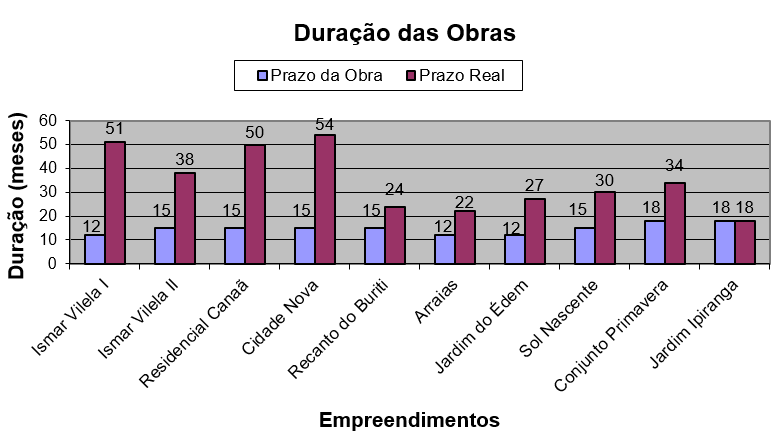
The Residencial Ipiranga Garden located in the city of redemption/PA, was hired in 30/01/2014, with 800 housing units and with a schedule of 18 (eighteen) months for completion of the work for the construction company AMEC. The housing units have 39.61 m ² of private area, in addition to Infrastructure and equipment in common use (multi-purpose sports courts, Playground and Community Center).
The 1° monitoring report of the enterprise (RAE) was issued in 27/03/2014 with 5.24% of work completed, followed so great developments without any downtime, so in may 2015 was issued the 15° RAE with 96.39%, where listed in 149 days advance. The 16° RAE then, with 100% of work completed, was issued in early August 2015 in reference services in July.
The work did not get any stoppage, delay and schedule reprogramming request, the contractor, the first venture of Social interest Housing Unit of the South and Southeast of Pará to complete the works on time limit proposed by initial schedule.
Other projects with different amounts of housing units completed works up to 4 (four) times the more the duration proposed in schedule with the following justification of delays, according to the Builders:
- Delays in transfers of payments of PMCMV measurements.
- Changes in projects authorised by the GIHAB/MB;
- Invasions occurred in the venture;
- Lack of skilled labor in the region;
- Festivals and holidays coinciding in the middle of the week, scattering the attention of employees;
- Unfinished services, non-conformities with the design and/or construction defects detected at the time of inspection by the GIHAB/MB;
- Reduction/resignation of staff due Construction's financial crisis;
- Period of rain in the region, preventing any work to be performed;
- Late delivery of material by the supplier;
- Delays in the issuance of documents, tests and/or work permits.
If we look at so we know how many obstacles and how good flexibility was required for Res. Garden Ipiranga dribble of these events and complete the work by the deadline, thus keeping completely positive image project, however, we have not concluded in this way.
Caixa Econômica Federal has eye on Quality program for pós-obra analysis of the Developments of the program my house my life to borrowers via links, record the problems that might be happening on the property, problems These in: structure, walls, floor, ceiling, doors, Windows, outside and cover, electrical installations, water and sewer.
The complaints received are forwarded directly to builders, which shall issue a report of a dispute or resolve the problem in the shortest possible time. If established, such as the use of construction defects or incorrect application of material, construction companies, partners, managers and responsible technicians are unable to undertake new credit operations until the problem that caused the appointment is resolved, as reports on the website Caixa.gov.
In analysis conducted by Silva and Lee (2017) with data from the first quarter of 2017, from 183 Eye program demands on Quality recorded in SISAQ (management and Control System with Quality PMCMV), between the demands from 94.53% registered, the Residencial Ipiranga Garden with 38.72% is in second place in the pós-obra of the enterprises complaints examined (graph 2), referring to the physical damage: cracks, problems on the roof liner, Boiler, ceramic floor, infiltration, Leaks and Gaps.
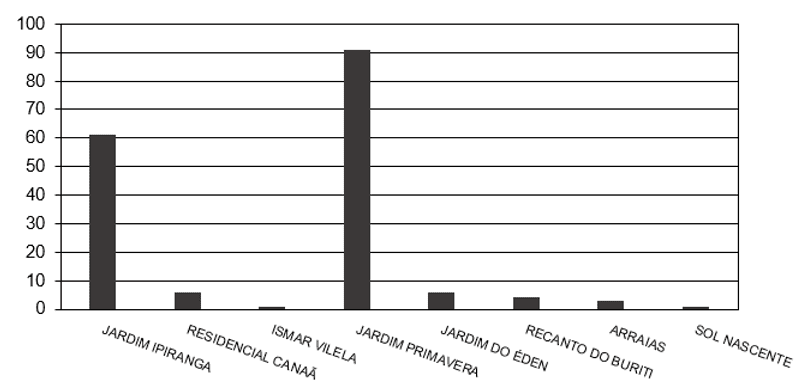
Given this, we can highlight the lack of control in a competitive Parameter highlighted by Lustosa et al. (2008)-speed-that as mentioned, must be accompanied along the categories of quality and reliability. The venture did not suffer any delay, and Yes, advance services, accompanying not so the quality.
Second Carpinette (2012) quality management is seen today as a strategic factor for the improvement of competitiveness and productivity of the company. Quality is the degree to which the product successfully meets the needs of the borrower during use, thus ensuring the reliability of the client.
For this, the CEF takes into consideration with the Builders, the existence of the Brazilian program of quality and productivity in Housing Construction (PBQP-H), which aims to support the basic effort of modernity and promote the quality and productivity of the residential construction industry in order to increase the competitiveness of goods and services produced by it.
In this scenario, the quality programs are management tools that allow companies to focus your attention on the client, streamline and standardize your processes, reduce costs and increase competitiveness between them. (SHANKAR, 1997)
Final considerations
We see the need for a good planning, control, logistics and interaction of all services to be conducted along accompanied by quality, thus avoiding delays, idleness, rework and expenses not provided for, the that would imply an even greater financial expenditure.
However, second Limmer (2013), which has observed, both in the implementation and management of most residential buildings, is the predominance of an informal system. There is, among the various teams participating in the process, the minimum and necessary integration to streamline the procedures for implementation of the project, which is essential in a work.
Before this, there were numerous tools that assist the construction in relation to your management, thus avoiding more delays and maintenance works due to the lack of quality in enterprises. According to Simão (2010), for some companies, the management of production became a powerful competitive tool to support these business strategies.
Goldman (2004 apud RESENDE, 2013, p. 26) States that planning is currently one of the main factors for the success of any enterprise. In construction, it is essential that a system that could channel information and knowledge from different sectors and then direct them in such a way that all of this information and knowledge can be used by the company, and the feedback a system of it's features.
As well as in planning control, which consists of a set of techniques and concepts available for use throughout the work, where it allows you to understand reality and assess the ways to go, along with the development of a production plan to provide deliveries of activities as necessity and execution order.
The planning and management must involve in organizing the construction site, scale and manage human resources, materials, provide and manage equipment, set goals, identify and act on the causes of the problems that will arise, between others. The implementation plan provides processes stabilized in the executions of the civil works and any other undertaking (GUTSCHOW, 1999 apud RESENDE, 2013, p. 28).
Because second Limmer (2013) at a time when it comes to quality and, by way of consequence, productivity, project management is done as a whole, by concatenating human resources, materials, equipment and also political, order to obtain the desired product – the work completed-within the parameters of time, cost, quality and risk previously established.
Well, as we noted, several Builders from other Businesses justified delays could have been avoided if there were a larger attention to the planning of the work, such as checking the services that could be performed near the rainy season without the need for downtime, as well as the update of documentation that needed to be present in the work of this continuity, as tests and/or licenses, and even an initial quality of production without the need for rework .
Recorded in a clear and concise manner such aspects forms can be used to increase the capacity of production, like overtime, subcontracting of production and recruitment of labor, working in conjunction with the parameters of Competitiveness- Cost, speed, quality, flexibility and Reliability. However, an enterprise must always observe the best strategy to develop your own plan of Aggregate production, Interaction in order to always keep the final quality work.
To do this, is so essential to the company's participation in the PBQP-H, in which pursuit of these objectives involves a set of actions, including: conformity assessment services and works, improvement of the quality of materials, training and retraining of manpower, technical standards, laboratories accreditation, assessment of innovative technologies, consumer information and the promotion of communication between the sectors involved.
Work in conjunction with other areas, the programming of the different activities necessary to the effective completion of the project requires experience and knowledge of construction practices. Good planners gain considerable knowledge in programming, participating in the planning and control of real projects, as reports Resende (2013).
As the planning proceeds to occupy a prominent place in the building, they become indispensable for the formation of qualified professionals in the construction site. In the light of these situations, it is essential to create a system that is really effective in the construction site, where it is able to ensure the perfect compliance with the pre-established goals for execution, in order to ensure the quality of the same.
Second Limmer (2013), this control system must always be appropriate to the needs of the enterprise, in addition to several systems with varying degrees of complexity and perfection can also be applied, so that one can analyze the design under all its aspects, whether technical, financial, economic and management.
As new technologies for improvement and programming of works increase with frequency every moment, however, the construction companies should accompany them rigorously, thus needing qualified professionals and effective training system for these, in which they can pass on the information to all sectors, by concatenating all the services; Since it is not easy to provide a suitable solution for all problems that might cause delays in production and which may incidentally affect the quality of the work, but it is possible to minimize them.
References
ARNOLD, T.J.R. materials management. São Paulo: Atlas, 2008. In: SIMON, Luiz Eduardo. Production planning. Indaial: UNIASSELVI Group, 2010.
CARPINETTI, Luiz Cesar Ribeiro. Quality management: concepts and techniques. -2. Ed. São Paulo: Atlas, 2012.
GOLDMAN, Pedrinho. Introduction to planning and cost control in civil engineering brazilian. 4. Ed. current. São Paulo: Pini Ltd, 2004. In: RESENDE, Carlos César. Delays due to labor management problems. Rio de Janeiro: Escola Politécnica da Universidade Federal do Rio de Janeiro, 2013.
GUTSCHOW, C.A. Quality in construction. The formation and tiering of construction professionals: Challenge and commitment. Recife, PE: GEQUACIL Core management in Quality in construction, 1999. In: RESENDE, Carlos César. Delays due to labor management problems. Rio de Janeiro: Escola Politécnica da Universidade Federal do Rio de Janeiro, 2013.
LIMMER, Carl Vincent. Planning, budgeting and control of projects and works. Rio de Janeiro: LTC, 2013.
LUSTOSA, Leonardo et al. Production planning and control. Oxford: Elsevier, 2008.
RESENDE, Carlos César. Delays due to labor management problems. Rio de Janeiro: Escola Politécnica da Universidade Federal do Rio de Janeiro, 2013.
SILVA, Renata; LEE, Sarah. Delays in Social interest Housing Projects of the South and Southeast of Pará. Marabá, PARÁ: Metropolitan College of Maraba, 2017.
SIMON, Luiz Eduardo. Production planning. Indaial: UNIASSELVI Group, 2010.
Souza, Roberto; ABIKO, Alex. Methodology for development and implementation of quality management systems in construction companies of Small and medium-sized businesses. Technical Bulletin of the Polytechnic School of USP, Construction Engineering Department, BT/PCC/190. São Paulo: EPUSP, 1997.
National Oversight My House My Life. SUMCV, 2017. Available in <http: www.sumcv.mz.caixa/sistemas/book/="">.</http:> 20 sea access. 2017.
Eye on Quality program. Caixa.gov, 2017. Available in <http: www.caixa.gov.br/voce/habitacao/minha-casa-minha-vida/de-olho-na-qualidade/paginas/default.aspx="">.</http:> Access on 04 September 2017.
[1] Graduated in Civil Engineering in College of Maraba, with specialization in production engineering in the University Centre Leonardo da Vinci UNIASSELVI.

